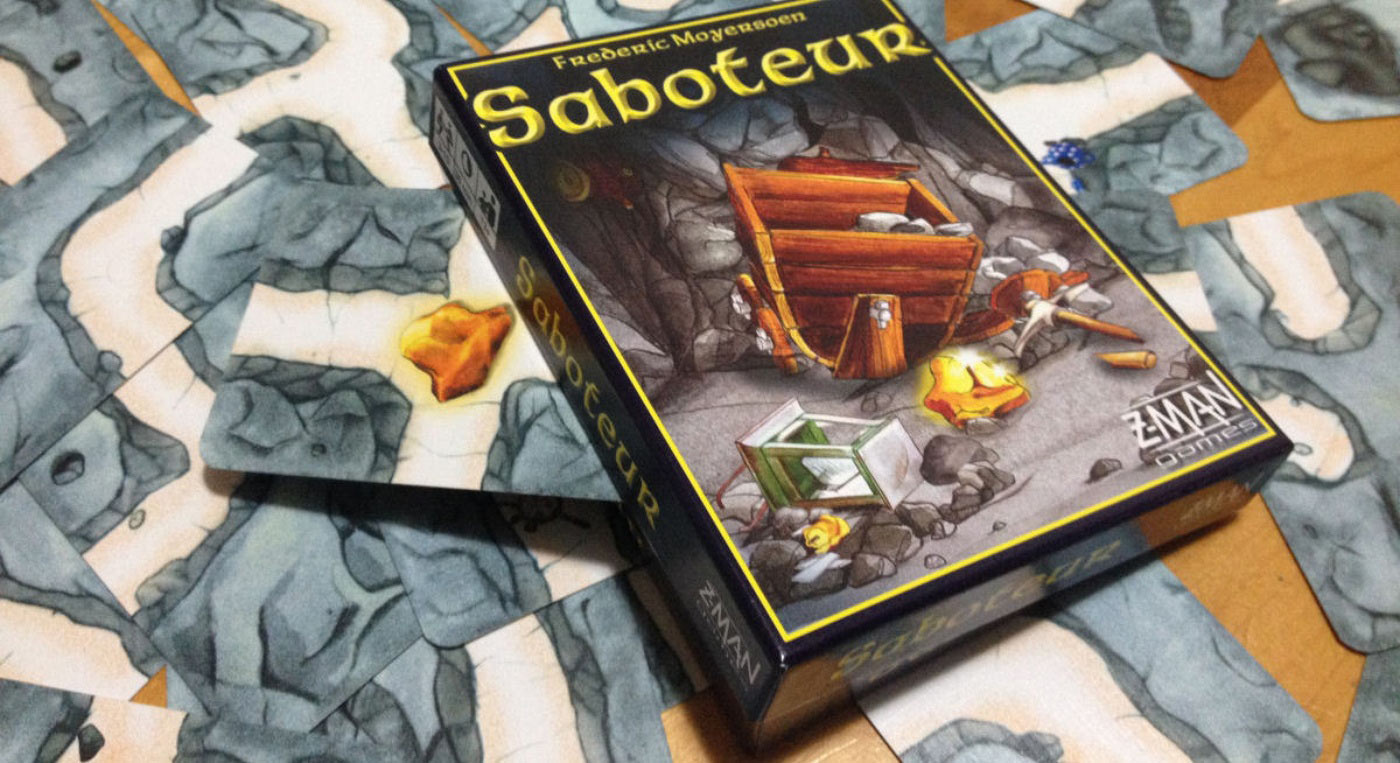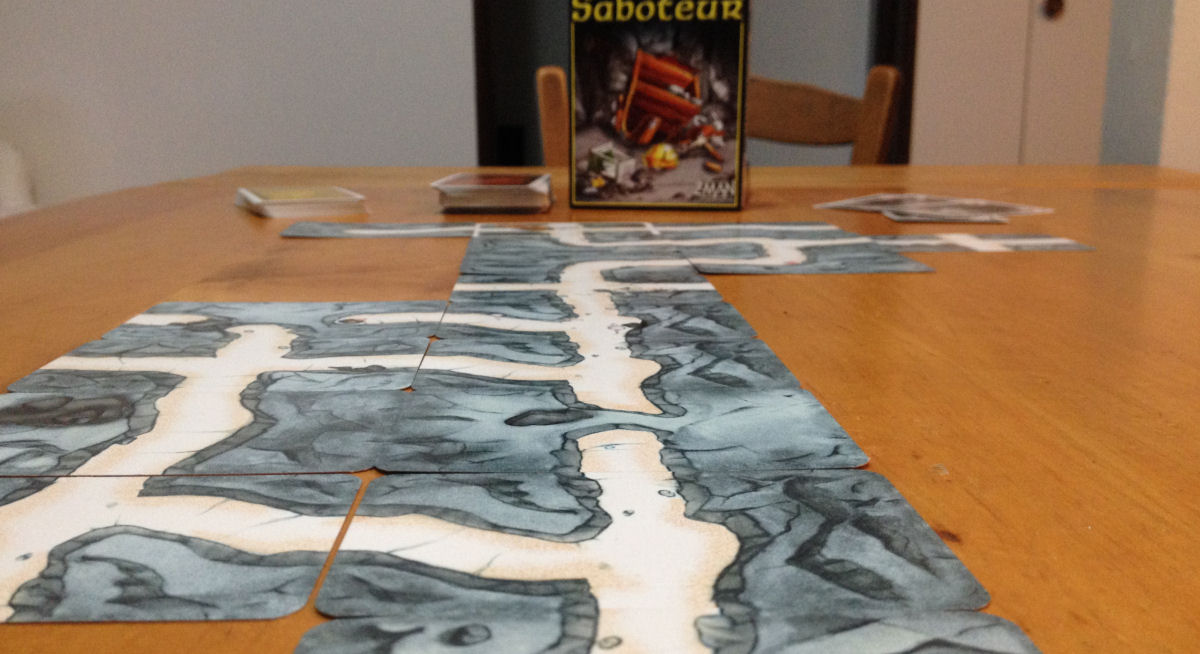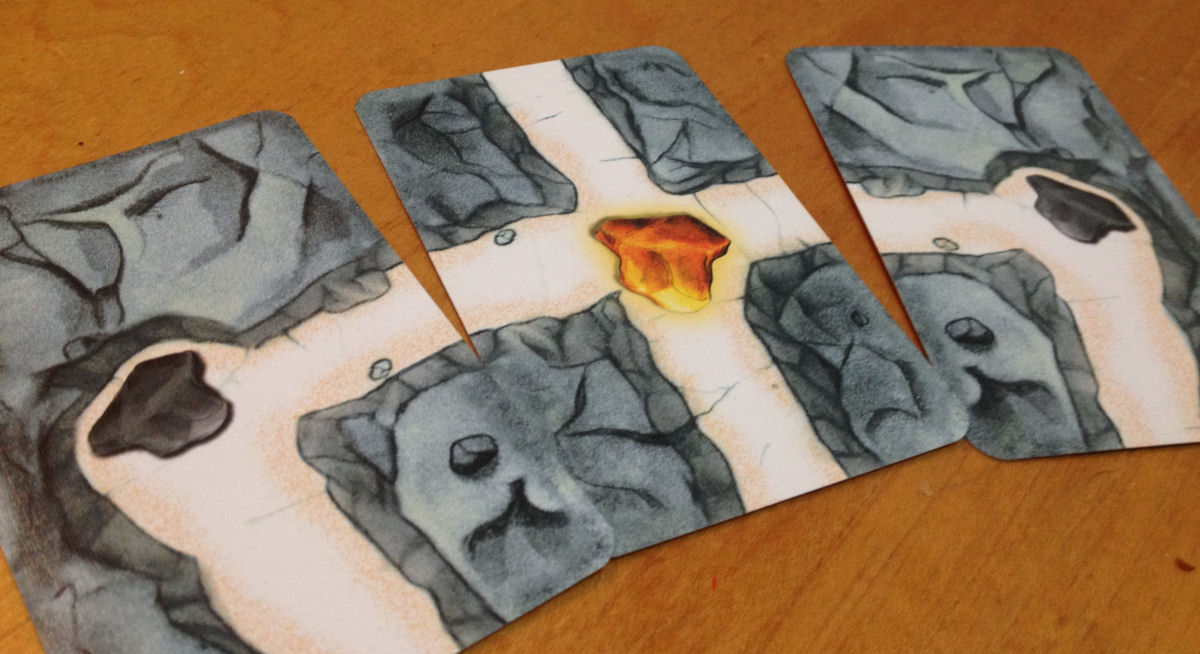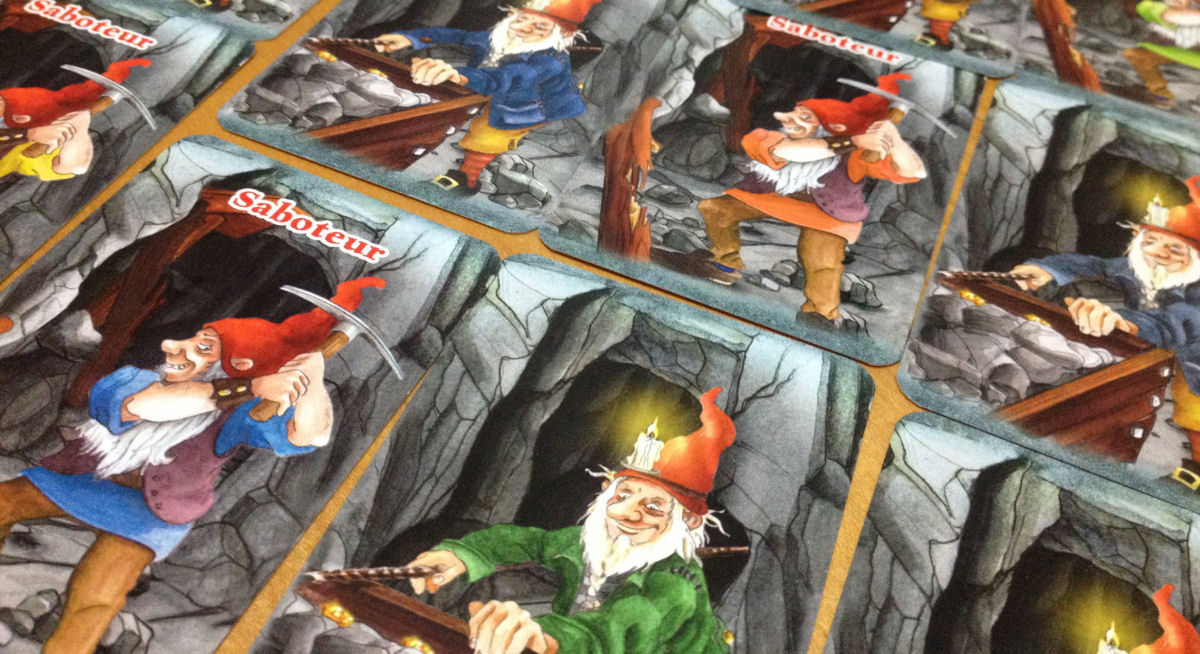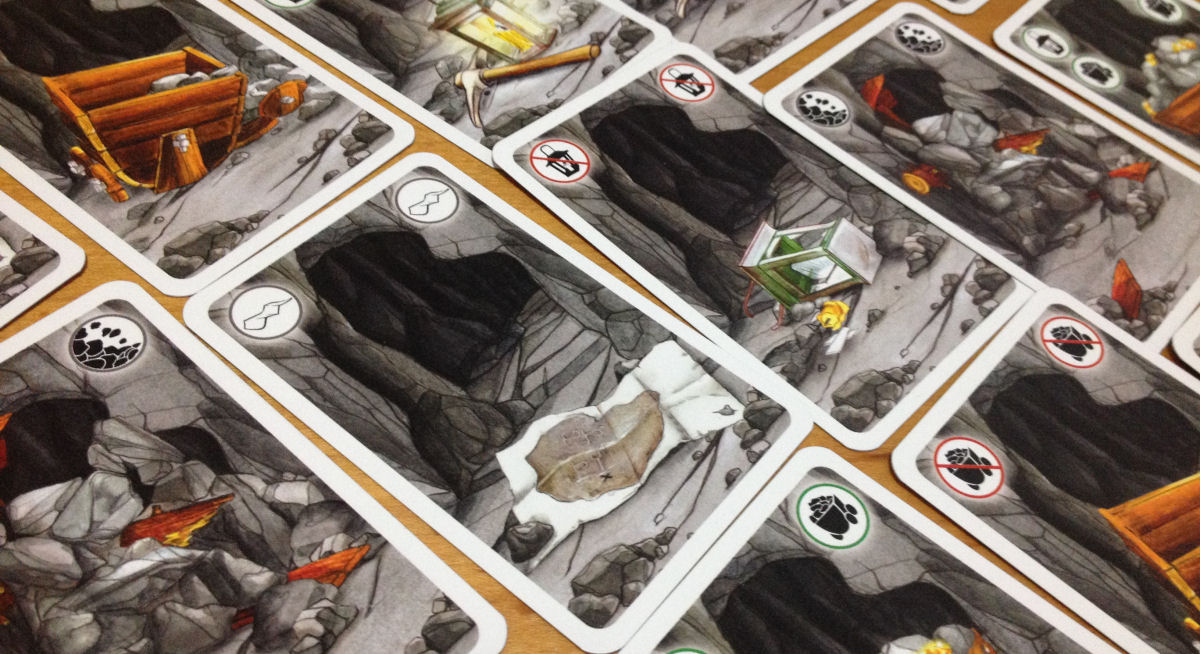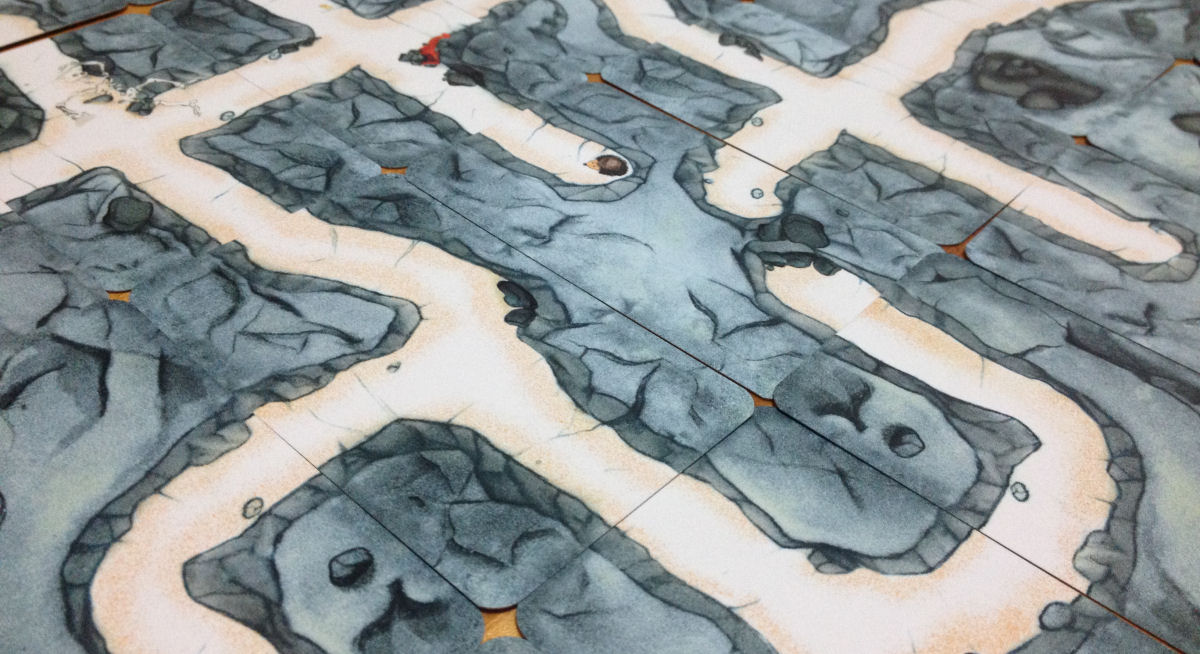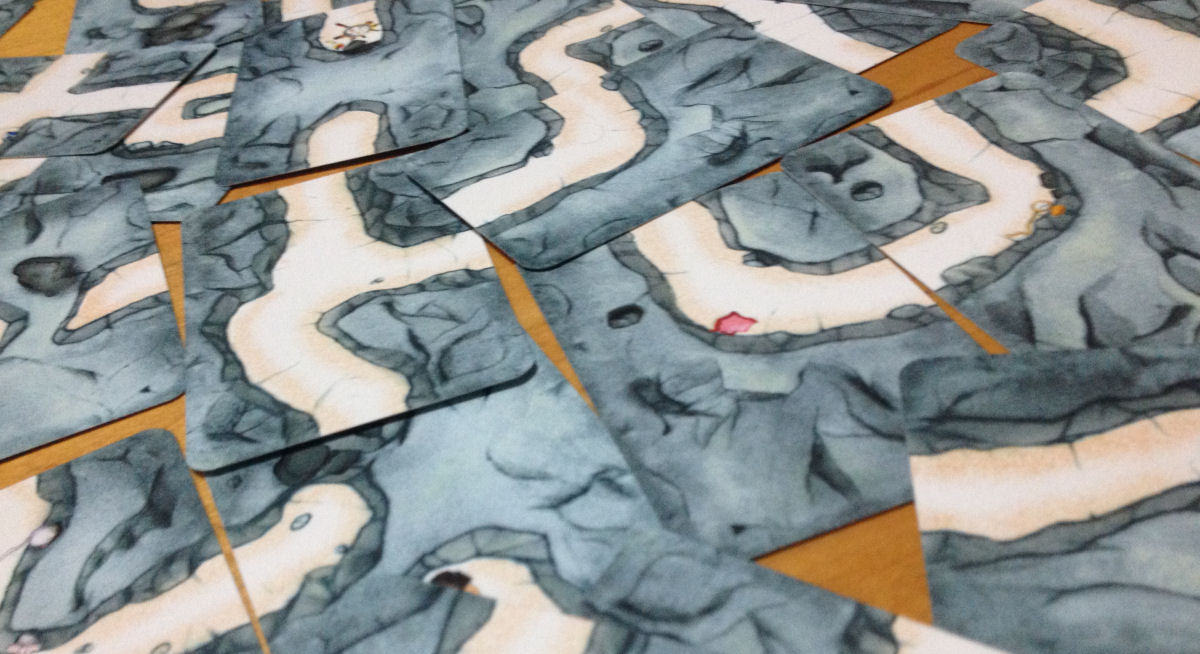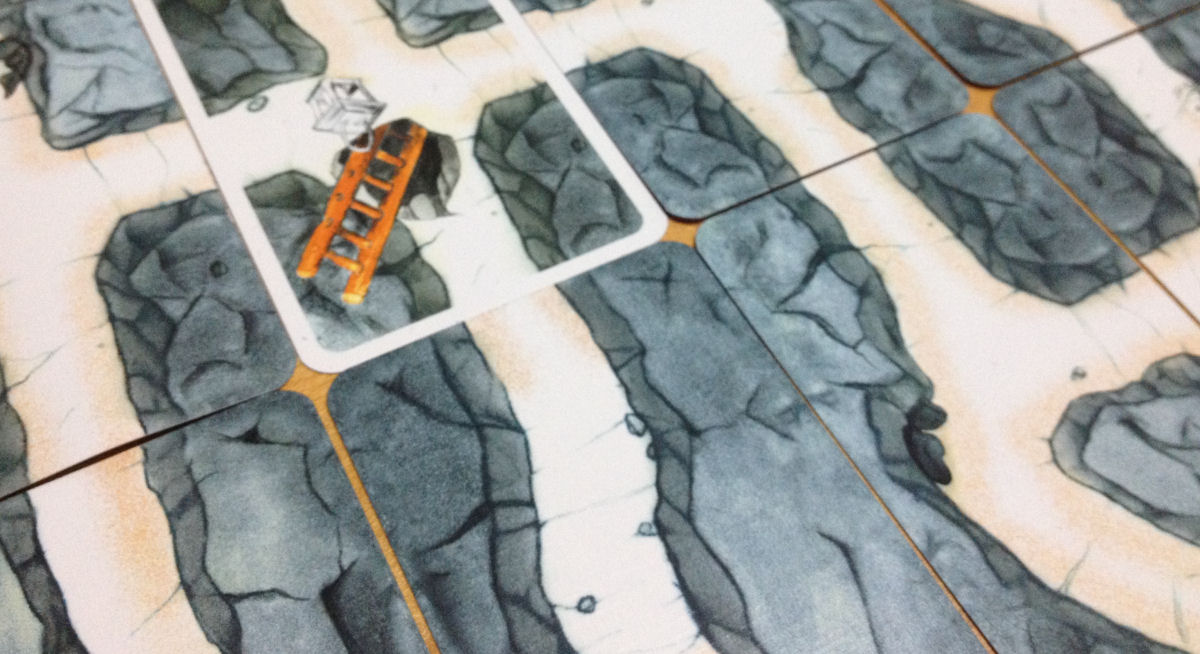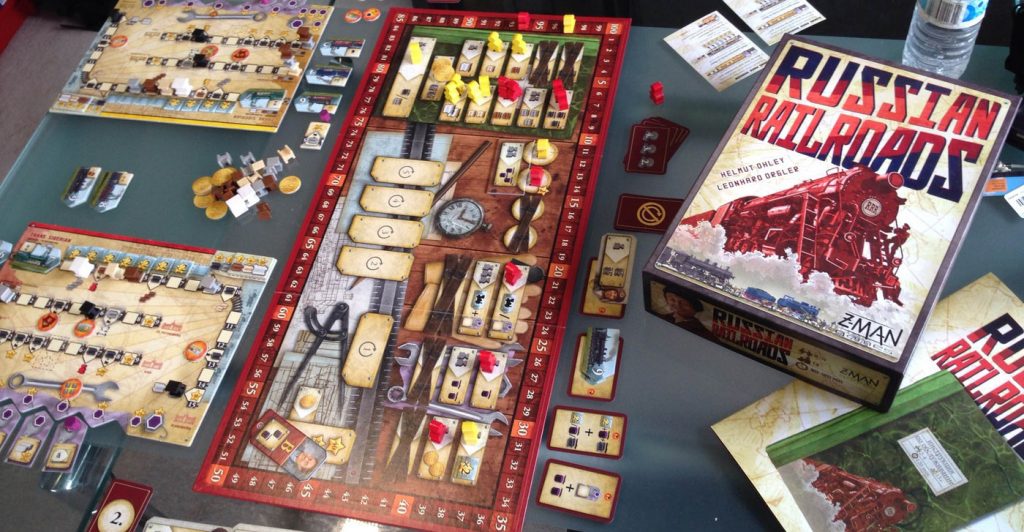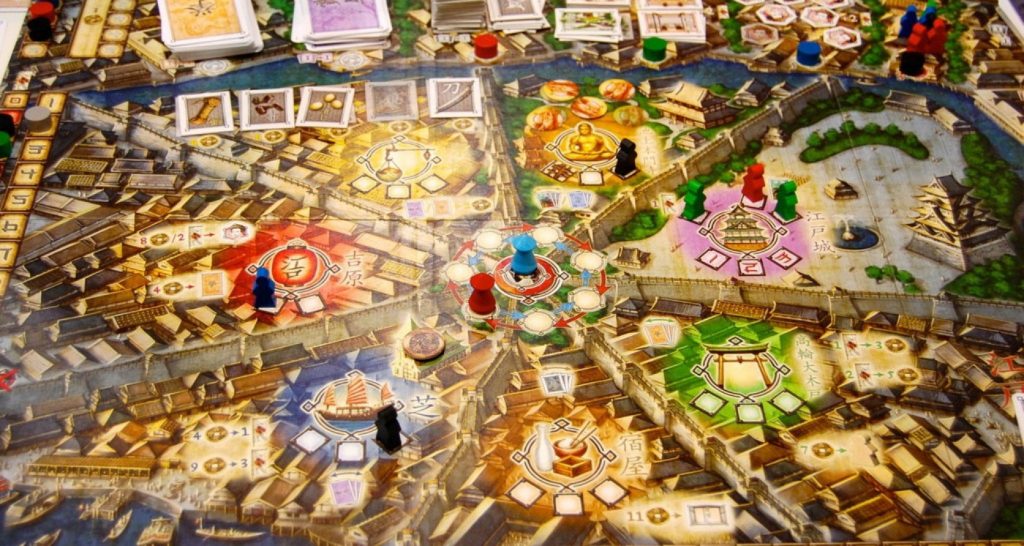Paul: The problem I’m having writing this review is, rather than simply telling you how Saboteur works, I really want to give you a selection of quotes from some of my recent games. The thing is, none of these will be remotely illuminating, since they’re all going to be the same sort of questions, which all go like this:
“What are you doing?!” “Why did you do that?!” “WHERE ARE YOU GOING?!”
Or they’ll be the same sort of answers, which go like this:
“I’m helping!” “I have no choice!” “JUST TRUST ME.”
Or they’ll be the same end-of-round exasperation, the same old post-battle cry of Saboteur:
“I TOLD YOU SO.”
I guess Saboteur is something of a game of soundbites.
I also think it’s is becoming one of my favourite hidden role games. Like The Resistance or Coup, Saboteur is light on rules and components, straightforward in its concepts and immediately a mess of mistrust and misdirection the moment you start playing. That’s exactly my flavour of fun and it means I can teach people how to play in maybe ten minutes, if that. Heck, I could teach everyone here how to play right now.
Saboteur is all about a team of dwarves digging their way towards gold. The dwarves have an idea of where the gold is, since they know it’s in one of three spots, but they need to work together to cut a path through the earth to find it. The possible gold deposits are represented by cards laid face-down and the dwarves begin at another card, an entrance, which is seven card-widths away from the middle of the three deposits.
Digging toward gold is easy. The players are dealt cards that include little sections of tunnel, things like corridors and junctions and ragged, echoing bends that wind deep into the bowels of the world. All they need to do is lay down a card that will help connect the entrance to whichever deposit they want to investigate. Connect it to the entrance card and you get to reveal it. Step by step, card by card, the dwarves are going to dig their way to wealth and glory. Probably. Possibly.
I have missed a small detail here, so I should fill you in: sometimes, not all of the dwarves want to get to the gold. Sometimes there are dwarves who want to ruin everything. Some of the dwarves are saboteurs. Some dwarves just want to watch the world burn.
If we jump back to the start of the game we find where things rapidly, rapidly got bleak, where the dial needle swung all the way from dulcet Disney to downright duplicity. Every player is dealt a card that tells them they’re on one team or the other. Most players will be gold-grabbing good gals and guys, winning a share of the loot if they can reach it, but a few of them won’t. A few of them are looking to either completely block the gold or exhaust the deck of tunnel cards before anyone strikes home. That’s the way they get rich.
Of course, nobody knows who is who. Of course. Of course.
Saboteur can be played by anywhere between three and ten players. There are seven Good Dwarf cards and four Saboteur cards. That’s eleven. No matter how many players you have, you’re always dealing from a slightly larger deck, calibrated according to player numbers, and so you never know exactly how many saboteurs you might be facing. In games of three and four players, you might not even be facing any. There may be no danger out there at all.
But how do you know? How do you know? Things start innocuously enough. You lay a card. Hopefully it edges you all a little closer toward one of the three deposits. You certainly try to convince your comrades that it does, or that it was the best card you could’ve played there. Some of the cards are useless dead ends, though I suppose they’re all useless if you’re holding them in the wrong context.
Some of the cards aren’t sections of tunnel. Some are special actions. One of those is an opportunity to peek at one of the possible deposits, letting you know right away if it is or isn’t gold. Another is a cave-in, allowing you to remove a section of passage (possibly to place something more helpful… right?). The others are cards that stop another player tunnelling by dousing their lamp or breaking their tools. These are to be slapped down in front of the unsuspecting victim with a harsh glare or profound cry of triumph, because they’re effectively a paralysis and three different penalties can be stacked on one poor, desperate dwarf. It’s okay. You’ll be stopping a saboteur in their tracks.
If you’ve been halted by another player breaking your pick, there are also cards that get you going again. Play the card with the corresponding symbol and you’re on your way next turn. Convince someone else to play that card on you and you’re a charmer. Help release someone else from their inaction and you’ve made a friend for life. Or at least the next five minutes.
Oh, I almost forgot. Whoever lays down a corridor section next to the gold deposit first gets to claim it. They draw a bunch of gold nugget cards, some of which are more valuable than others, and get a secret first pick before the leftovers get passed around and smuggled away. If the saboteurs win, they get an even split of gold, the amount of which decreases relative to how many saboteurs were playing that round.
So, you see, whoever you are, it’s entirely within your interest to slow other players down. It’s entirely within your interest to do, or seem to do, anything you can to reach the gold first. It’s entirely within your interest to lie or, ahem, misrepresent the situation in order to achieve (or not achieve) this.
Other people lying will include:
The Saboteurs. ie “I’m telling you, that one is the gold deposit.”
The Dwarves. ie “I’m not a saboteur, I caved in that pathway so I can lay a better one.”
Everyone. ie “Look. Listen. Look. I just don’t have anything helpful I can play right now. Otherwise I really would.”
Except you can see how all this goes, can’t you? Maybe two thirds of the players all want to get to the gold first. The rest are doing everything they can to block it without outwardly betraying their scheming. Nobody knows who is who, so both teams have to guess who their comrades are and it’s often a perfectly valid tactic to simply try to avoid any accusations yourself and quietly inch things one step closer to the result that you personally are hoping for.
Really, Saboteur is a game all about you.
If that were the end of it, if you dug your way toward (or around, or away from) the gold just once, with everyone lying about what they had, what they’d seen, what they were doing and what they wanted, that’d be fine. But Saboteur has you play three rounds like this. Three rounds across which you try to accrue more gold. Three rounds in which the roles are re-dealt, changing who the saboteurs are and even how many there might be. That’s enough time for grudges to develop, suspicions to be confirmed and mistakes to be made. This isn’t The Resistance, where there’s one lethargic, twisting puzzle to be solved before events crawl to a conclusion. This is a team of directionless dwarves repeatedly (and almost literally) stumbling through the darkness as they feel for clues as best they can.
Another thing it happens to be is wonderful, wonderful guesswork. Unfair accusations, blind conjecture, misdirection and misinformation all whirl about the table like canaries around a stunned cartoon coyote.
Recently, I had my first chance to see Saboteur played with smaller player groups, groups of three or four. I’d previously avoided this because I generally imagine hidden role and bluffing games to be better with medium or large-sized groups. Actually, it was great. It was a heck of a lot quieter than some other games, as we spent much of our time silently laying out cards and responding to other people’s moves with a muted “Hm,” or “Ah,” and looking so closely for saboteurs where they had, in fact, never ever existed. What could be a protracted game of accusations became a tight, fast little ball of suspicion.
Hopefully, you can already tell that I like Saboteur a lot. While I do enjoy size and complexity and (sometimes) tremendous scale, I’m developing an increasing appreciation for games that fit clever ideas into small boxes, letting players spool those ideas out to inevitably tie themselves in knots. Saboteur wants you to tie yourself up, to trip yourself up, as you’re trying to do the same to the players around you. It provides a brilliant platform for deceit and deception, yet it’s just cards and cards and cards. The pictures here don’t quite do it justice. They’re only components and they don’t capture the life that springs from this game the moment the first eye is narrowed.
It’s not perfect. I’m not a big fan of cards that just stop other players from acting, cards that are effectively “Miss a turn” (or perhaps several, if you can’t get the right counter). In smaller groups, these cards are more severe, because you’re less likely to have a comrade willing to help you out of a jam, though in any group the game never offers enough of a reward for anyone doing this anyway. I’d suggest house ruling it so that if you free yourself from whatever card is blocking you, you still get your turn. Otherwise, it’s another circuit of the table and more opportunities to receive another beating. Similarly, while it’s hilarious to see three different players play all three of the different penalty cards on one player, it seriously hampers that person’s ability to keep playing.
And yes, it sometimes really is possible that you might end up staring at a hand of cards that’s just of no use to you, none at all. No tunnels or crossroads that fit anywhere helpful. No cards to set free a player you want to help. No cards to peek at the deposits.
But still. Still. Saboteur is so petite and so snappy and it brings all the sass to the table, a particular flavour if sass that you don’t get with The Resistance. It’s ephemeral. It’s ever-changing. It’s one of the best simple games of bluffing and deception out there and if you like lying to your friends and wrecking everything they’ve been working towards in thirty or forty minutes, Shut Up & Sit Down recommends you start digging.
Oh God, I just want to play it again. I want to answer all those questions with more cave-ins, more peeks at the treasure, more outright lies and more gold. More gold. More gold.

